HD Composite Decking is a low maintenance and durable alternative to timber. It combines traditional wood appearance with the latest in composite technology. Its long life, consistent colour and slip resistant properties are just a few reasons why it is becoming a direct replacement for both domestic and commercial decking applications. HD Deck is a composite made from responsibly managed 100% FSC® timber and both recycled and virgin high-density polyethene plastic. Keep reading to check out our comprehensive HD Composite Decking Fitting Guide.
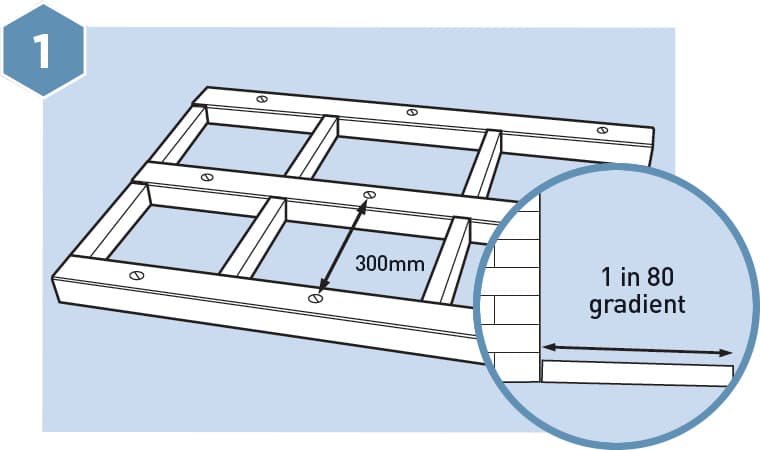
We recommend using treated 4″ x 2″ timber joists and building in a gradual gradient of at least 1 in 80 (1.25%) to help water naturally disperse down the length of the deck. The gradient should run away from adjoining buildings. IMPORTANT: Spacing between the joists should be no greater than 300mm between each joist.

Place the first piece of HD Composite Decking on the timber frame with the decking running perpendicular to the joists. The first piece of decking may be secured with end clips. Do not screw or nail through HD Composite Decking, use 1 clip and screw on every joist.
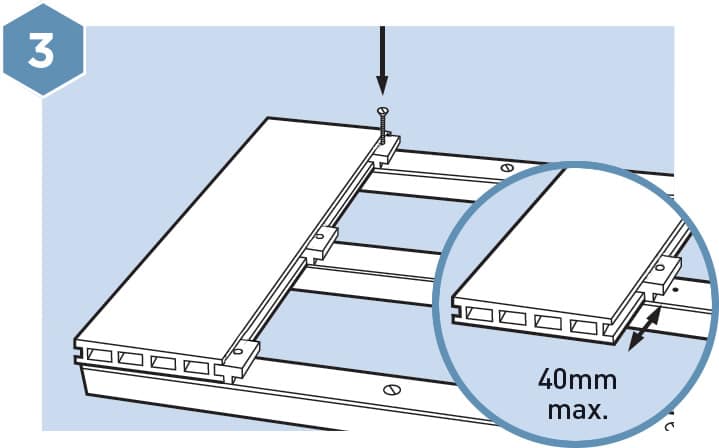
Take a screw, place in the hole located in the clip and screw into the wooden joist. Do not tighten at this stage. Make sure the boards do not overhang the joist at the edge by more than 40mm.
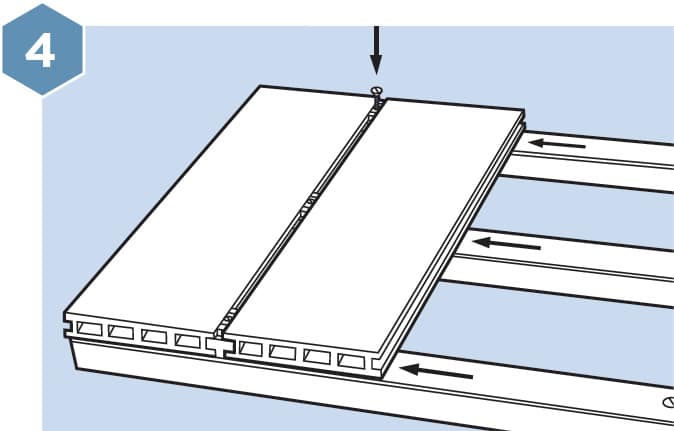
Take the next piece of HD Composite Decking and securely push into the clips. Now nip the screw to secure the clip against the board. Do not over tighten.
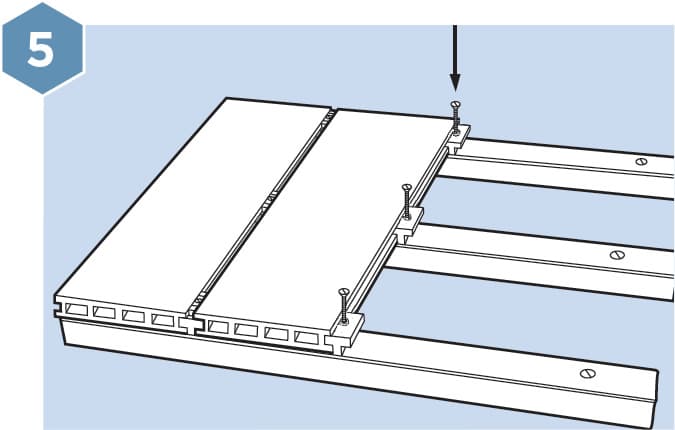
Now repeat steps 3 and 4 to cover the deck, using 1 clip and screw on every joist.
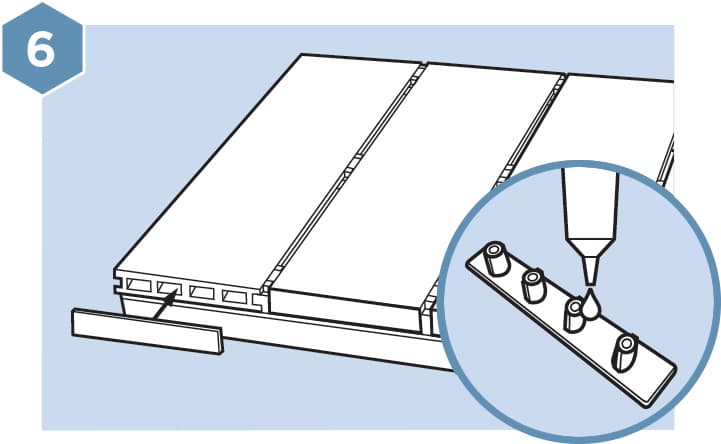
Liberally apply a high-quality grab adhesive to the end caps to secure for extra adhesion. Wipe away any excess from the edge of the cap.
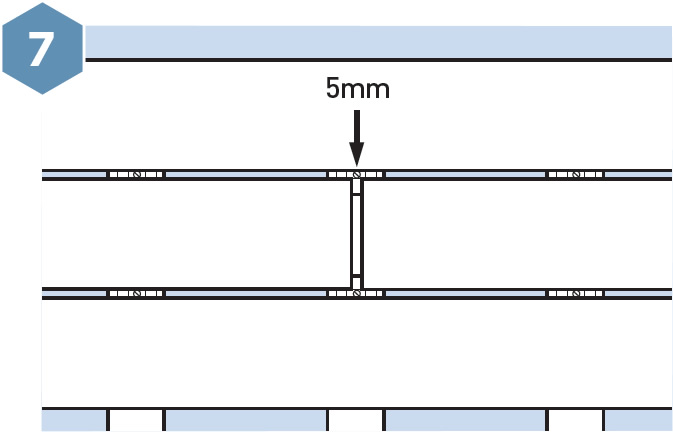
IMPORTANT: Do not allow HD Composite Decking boards to meet at the ends, at temperatures of 15°C or above allow a 5mm gap for expansion. Joins should only occur over joists with a clip securing each end. When fitting at temperatures below 15°C please refer to www.composite-prime.com.
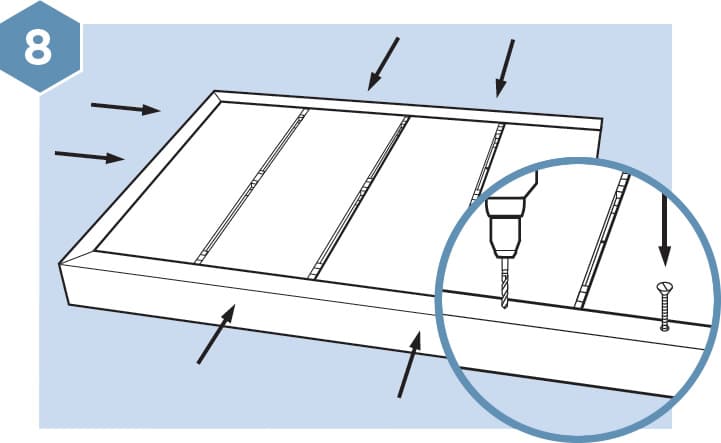
If using, take the Angle Beading Strip and place on the edge of the deck. Push up to the edge of the deck. Use a drill to first make a pilot hole through the beading and deck. Screw Angle Beading Strip into the joist through the first pilot hole. Drill more pilot holes as required and affix Angle Beading Strip with a screw.
Please Note: Images and drawings in this HD Composite Decking Fitting Guide are for illustrative purposes only. HD Composite Decking may be laid in a variety of patterns, we recommend that you draw out how you would like your deck to appear, making notes of joins and joists before starting the installation. It is not recommended that HD Composite Decking be installed in temperatures below 5°C. For elevated decks greater than 1.2 meters in height we recommend using a professional installer. When cutting, always saw the board face up with a fine-toothed blade to prevent furring the face edge.
We are really proud to announce the launch of the latest addition to our Garden Fence Panel range, the Professional Closeboard Fence Panel. This super strong top of the range fence panel benefits from several features that make it, in our opinion, one of the best fence panels on the market.
Summer provides the perfect opportunity to get out there and tend to your garden. One of the chores on your list may involve treating fence panels. Just like anything else, your fence needs the proper care and attention to help it last for years to come; by taking the time to do it now you could be saving yourself money in the future. Here are some reasons why it’s so important to treat your fence properly.
If there’s one thing we can look forward to when the weather gets warmer, it’s finally making use of the garden. For months on end we sit at the window, longing for long evenings and cool beverages to enjoy with our family and friends, pining for a time where we don’t have to think about whether it’s cold enough for a coat or whether the heating needs to be on full blast at all times. But when that time comes, are you prepared? How many times have you rushed into purchasing garden furniture that only ends up breaking after one summer? The answer is probably quite a few. Instead, why not take a step back and contemplate a few features that will ensure your investment is a long-term one, not just a quick fix to make the most of the two-week heatwave that will end up rolling round in early September? Below, we go through our top three things to consider before buying garden furniture this summer.

